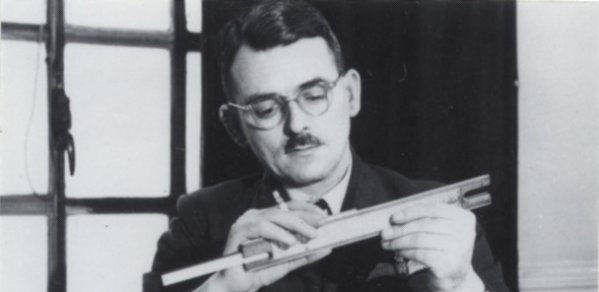
Sir Frank Whittle (1907-1996) known as the inventor of the jet engine, gained a BA with first class honours in the Mechanical Sciences Tripos here in the Department in 1936. The jet plane as we know it today has evolved from his original design and has been in operation around the world for just over 66 years.
The Whittle Laboratory was opened in May 1973 by Sir Frank Whittle and is a Research Group within the Energy Division of the Department of Engineering. There are 6 teaching staff, 9 research staff, 27 research students, 12 support staff, an industrial visitor and Professor Howard Hodson totalling 56 staff in all. The Laboratory specialises in the fluid dynamics and thermodynamics of all types of turbomachinery and has excellent contacts with industry, government bodies and other research organisations. The Whittle Laboratory is a part of the Rolls-Royce UGTP (University Gas Turbine Partnership) and is responsible for all research relating to Turbomachinery Aerodynamics.
In this, the centenary year of Whittle's birth, the key challenges facing aero-engine technology are reducing fuel burn, increasing operability and lowering noise. The modern jet engines of today have developed from Whittle's original design into highly efficient systems that can power huge aircraft for thousands of long-distance flights with minimal maintenance. However, this is not enough, and to meet our demands for continued, sustainable air travel, further improvements are needed. The research at the Whittle lab consists of a huge range of projects that are focused on addressing these challenges. Most of the projects are tied to industry and the results of many previous investigations have fed directly into the design of jet engine components that are now flying around on thousands of aircraft.
It is becoming increasingly difficult to find ways of improving modern jet engines. Researchers at the Whittle have to look closer at the details of the engine components and to try to understand more complex aspects of turbomachinery aerodynamics. This is a theme of many of the current research projects. For example, there is the potential for large gains in engine performance if the flow around intricate geometrical features can be controlled. Previously, engine components have been simulated, both in tests and calculations, using simplified geometries. However, the real geometry in the engine is much more complex, and the performance of this can be significantly different. The figures below show an example comparison between calculations for a "simplified" and a "real" turbine geometry in an engine and how this affects the flow.
Real geometry effects on an axial compressor (F. Montomoli)

The open rotor engine geometry
(A. Zachariadis)
Another approach is to look to more radical configurations of aero engines for the future. One intriguing alternative that is the attention of research at the Whittle Laboratory is the "open-rotor" or propfan engine. This is similar to a turboprop engine, which uses a gas turbine to drive a propeller, except that the propfan uses specially shaped high-speed propellers. This has two main advantages. Firstly, a propfan has no ducting around the engine, and without this bulky housing a major source of drag is removed. Second, by making use of specially shaped counter-rotating propellers, the design avoids generating "swirl" - the vortex of wasted energy that usually trails in the air behind aircraft propellers. There is the potential of 20-30% reduction in the fuel consumption of aircraft powered by such devices. However, one of the major issues is making open rotors acceptable in terms of noise and this is something that researchers at the Whittle Laboratory are tackling.
Further information about the latest research on jet engines can be found at the Whittle Laboratory's website.
The Department of Engineering has helped Quanta Films with access to some key Cambridge locations during the production of Quanta's documentary film, 'Whittle - the Jet Pioneer'. This film is being shown on the History Channel on Friday 1 June at 8 pm and again on Saturday 2 June at 9 am. A feature-length version with extras is available on DVD from Quanta. The core of this fascinating documentary is an exclusive interview with Sir Frank Whittle filmed with Quanta films in 1986. It also contains contributions from his son Ian Whittle, veteran test pilot Captain Eric Brown RN and Hans von Ohain, who designed Germany's first jet engine.

